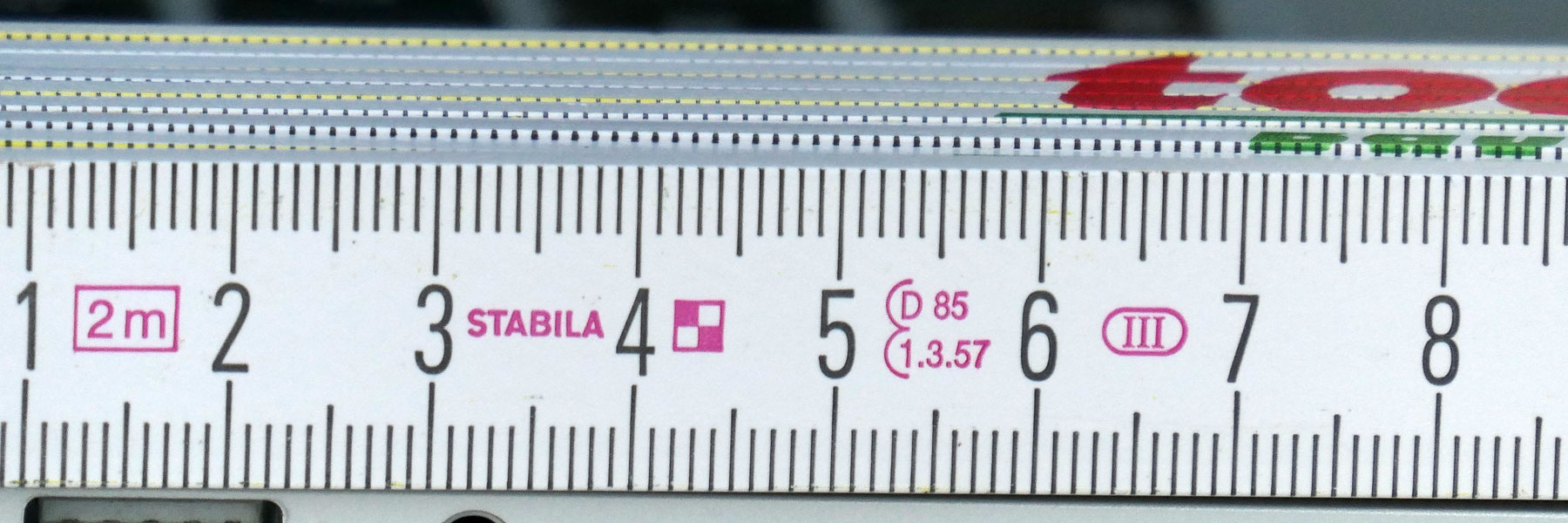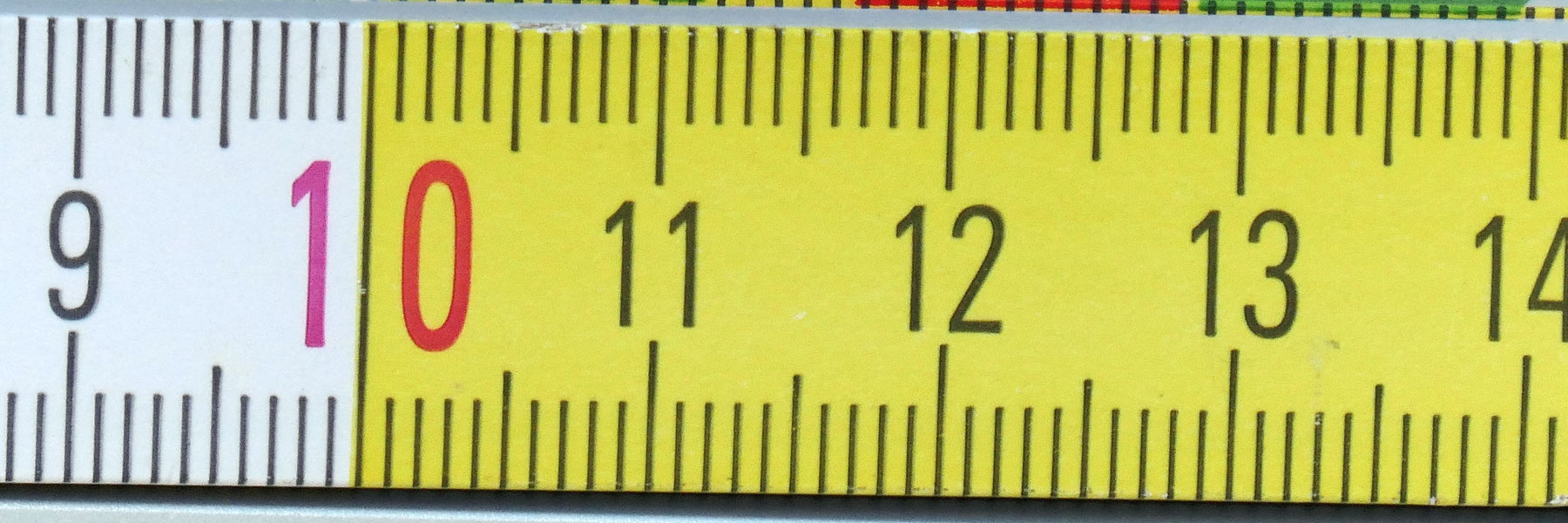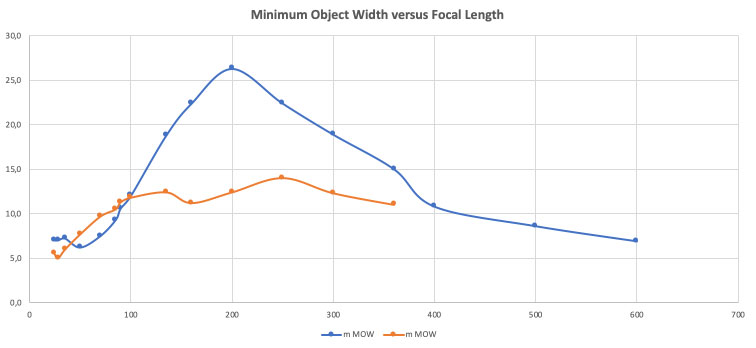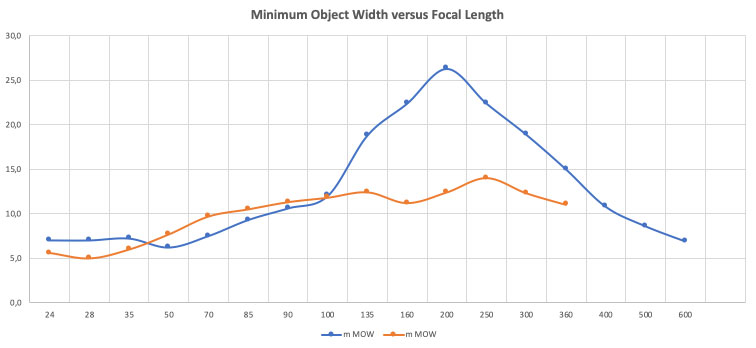Panasonic TZ202: Tele Close-Ups
This page and its companion pages discuss the macro, or better, close-up, abilities of the Panasonic TZ202. Although the camera has a macro mode (allowing shots from 3 cm), I would not call these photos "macros" and therefore use the term "close-up."
This page presents macros that I will call "tele macros" because they are taken from a distance, typically 1 m, and with a telephoto focal length. There are also some options between wide-angle macros and telephoto macros, which can be seen for the TZ202 in the table further down.
Introduction
Most compact cameras offer macro capabilities in the wide-angle range of their lenses, for example:
- Ricoh CX4 (and mates): 28 mm at 1 cm distance
- Sony RX100 M1: 28 mm at 5 cm distance
- Sony RX100 M4: 24 mm at 5 cm distance
- Panasonic TZ202: 24 mm at 3 cm distance (as I found out, 28 mm at 3 cm distance lets you come even closer...)
This may be fine for static targets and targets that you can reach, but is unusable for animals that fly or run away when you get too close, as well as for any object, be it plant, animal, or other objects of interest, where you cannot get close enough for "real" macro shots.
I was therefore looking for a solution for the latter targets, particularly butterflies and plants, which means that I wanted higher magnifications at larger distances (30 cm to 3 m or more). You can get these only with a telephoto focal length, and you also need a fairly low shortest focus distance at that focal length. I tested probably all of our cameras to find out the shortest focus distance at "typical" focal lengths. Most cameras seem to have "sweet spots" at certain focal lengths that lead higher magnifications than at other focal lengths.
However, except for the Ricoh compacts and the respective P10 module for the Ricoh GXR, our cameras do not really extend into the telephoto range (usually, they end at 70 to 100 mm equiv.) and thus, are not really usable for "telephoto macros" (furthermore, we no longer use our Ricoh cameras...). Here is, for example, a comparison of the two Sony RX100 models that we own:
| RX100 M1: Minimum Object Width and Distance | RX100 M4: Minimum Object Width and Distance | |
|
|
Neither the minimum object widths nor the minimum distances for longer focal lengths make me enthusiastic here, although they are still good enough for larger plants. The RX100 M4 seems better here, at least when using 70 mm (equiv.). You can improve these values if you use the different versions of the electronic zoom, but the image quality suffers considerably if you go beyond a factor of 1.5...2 x.
Note that you get greater magnifications when using close-up lenses, even longer focal lengths may be useful here, but you still have to be close to the object, maybe even closer than without a close-up lens (this depends on the diopters of the lens, the focal length of the lens, and other factors).
I was therefore looking for cameras with 1" sensor with a longer reach. In the end, there are not too many candidates on the market: the bulky Panasonic FZ1000 and its successor, its competitor, the equally bulky Sony RX10 in its different versions, and finally the Panasonic TZ100 (and its name variants). I nearly bought the FZ1000, omitted the TZ100, and in the end decided for the TZ202, which has a respectable maximum focal length of 360 mm (equiv.). And this is what I found out about its minimum object size and minimum distance at different focal lengths:
| Focal Length (mm) | 24 |
28 |
35 |
50 |
70 |
90 |
135 |
160 |
200 |
250 |
300 |
360 |
720 |
| Min. Distance normal (m)* | 0.5 |
0.5 |
0.5 |
0.5 |
0.5 |
0.5 |
0.5 |
0.5 |
0.7 |
1.0 |
1.0 |
1.0 |
1.0 |
| Min. Distance macro (m)* | 0.03 |
0.03 |
0.05 |
0.1 |
0.2 |
0.3 |
0.5 |
0.5 |
0.7 |
1.0 |
1.0 |
1.0 |
1.0 |
| Min. Object Size macro (mm) | 55-56 |
49-50 |
59-60 |
76-77 |
96-97 |
112-113 |
123-124 |
110-114 |
123-125 |
140 |
123 |
110 |
55 |
| Largest Aperture (... f/8) | 3.3 |
3.5 |
3.7 |
4.2 |
4.7 |
5.0 |
5.7 |
5.8 |
6.1 |
6.3 |
6.4 |
6.4 |
6.4 |
As can be seen, 160 mm at 50 cm and 360 mm at 1 m seem to be the "sweet spots" for tele macros, leading to a minimum object width of about 11 cm, which is not at all "amazing" for small objects. Other focal lengths may also be handy, depending on the target object. Using the i.Zoom, you can cut the minimum object width by half (to about 5.5 cm at 720 mm) at the same distance, as the rightmost column shows for 720 mm. But this comes at a price - the images quality suffers a lot.
Here are three recent test photos for finding the minimum object width at the shortest distance for three different focal lengths (maximum optical zoom, maximum "acceptable" i.Zoom*, maximum i.Zoom):
Photo: Minimum object width at 360 mm (optical zoom) and shortest distance of 1 m - about 108 mm
Photo: Minimum object width at 500 mm (i.Zoom) and shortest distance of 1 m - about 77 mm
Photo: Minimum object width at 720 mm (i.Zoom) and shortest distance of 1 m - about 54 mm
*) According to an owner of the Leica CLux, which is the Leica variant of the TZ202
The test reveals that indeed the minimum object width is cut in half when using maximum i.Zoom (720 mm equiv.). Please note that these photos were taken at ISO 400 to avoid camera shake. In practice, I often use even higher ISO values for the same reason.
Update: Sony RX10 M3 versus Panasonic TZ202
In December 2018, I finally decided to buy a "bulky" Sony RX10 M3 (I discuss this elsewhere on this site). Of course, a comparison of the close-up behaviors of both cameras was one of the first things that I started.
On another page, I consolidated numbers from the table above a little bit to be able to create diagrams from them (table to the left). Both diagrams (to the right) show my mean minimum object width values across the focal length scale.
Do not take all this too seriously, but a few things can be easily read from the diagrams and the table above. Here, I comment only on the TZ202 (more or less in line with what I write above):
- The TZ202 lens has its "sweet spots" for close-up shots at 28 mm, 160 mm, and 360 mm (with nearly the same magnification at 360 mm as at 160 mm).
- The smallest minimum object width that the TZ202 can achieve are about 5 cm at 28 mm; at 160 and 360 mm, the minimum object width decreases to about 11 cm.
- For the TZ202, minimum object width always stays below the size of a postcard.
A Few Experiences with Tele Macros...
The major advantage of tele macros is that you disturb animals less so that they do not run or fly away and that you can capture objects that are out of your reach in a reasonable size. Of course, the targets are often farther away than the minimum distance for a certain focal length, resulting in even smaller images of targets pixel-wise. Since the objects often do not fill the frame or are fairly small, you have to take sections and the quality deteriorates even more than it already does when using the softer tele range and the i.Zoom. The results may not be photos to present elsewhere, but they may be good enough for determining the species or for sending them in an e-mail or publishing them on a Web page.
When taking wide-angle macro shots, you may have problems with shading, the optimal distance, focusing, and more, but the image quality is usually quite good. You also have more depth of field and overall quite a different perspective from tele macros. You may like or dislike this. With telephotos you have less depth of field and thus, it is easier to separate the object from the background. On the other hand, I find it often hard to even find the target with large tele focal lengths (it is like with binoculars or a telescope), and I often shake to and fro because of the huge magnification, when I take hand-held shots (which I do most of the time).
By the way, sometimes the TZ202 gets very slow at 720 mm because of autofocus problems (this is not the case with manual focus), making taking photos even harder...
Sample Photos
The following photos are primarily meant to demonstrate what can be achieved when taking photos from a distance of 1 m using maximum optical zoom (360 mm) and maximum i.Zoom (720 mm). Because it was fairly dark, they were shot at ISO 3200! Nevertheless, I also enlarge the fire bug, because this is what you do with such photos...
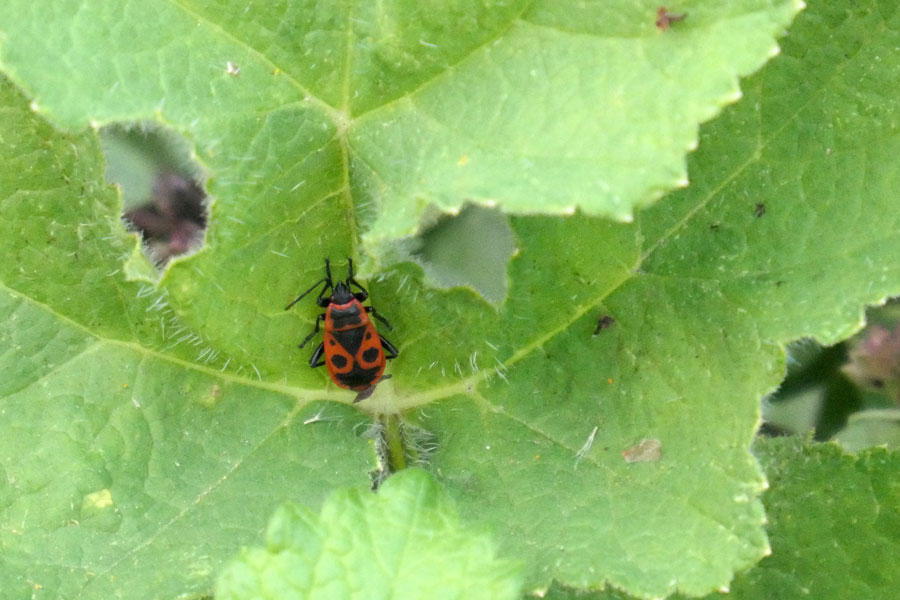 |
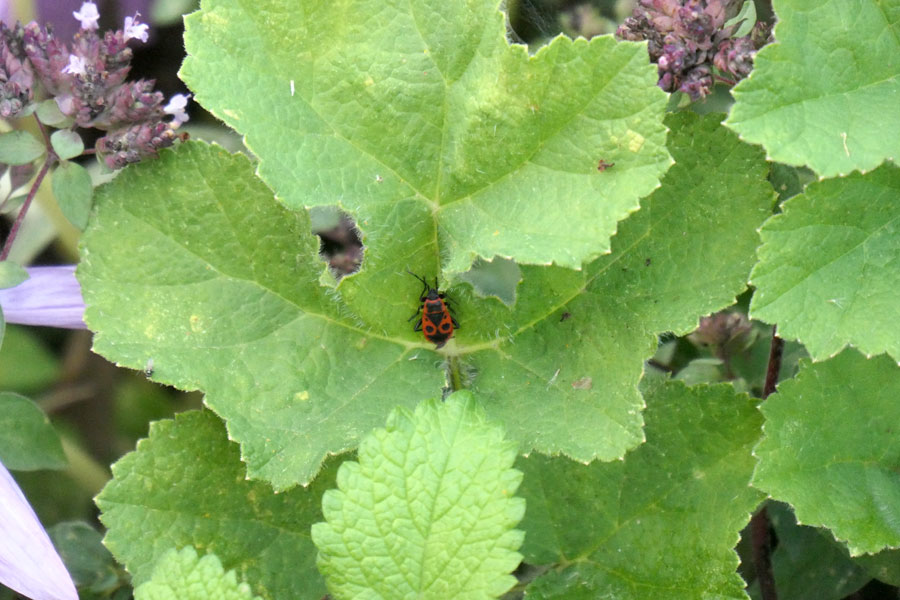 |
|
Original section, 720 mm, 1 m |
Original section, 360 mm, 1 m |
|
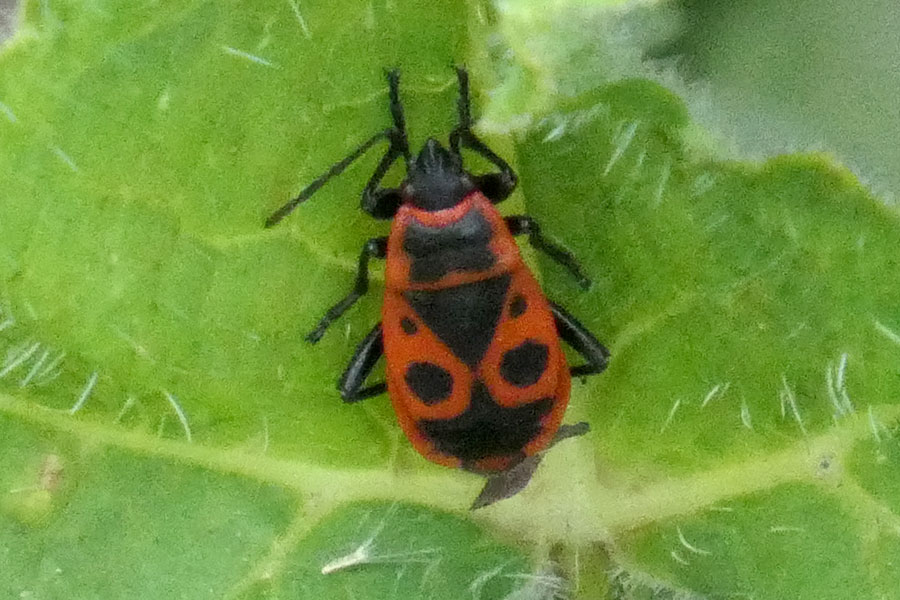 |
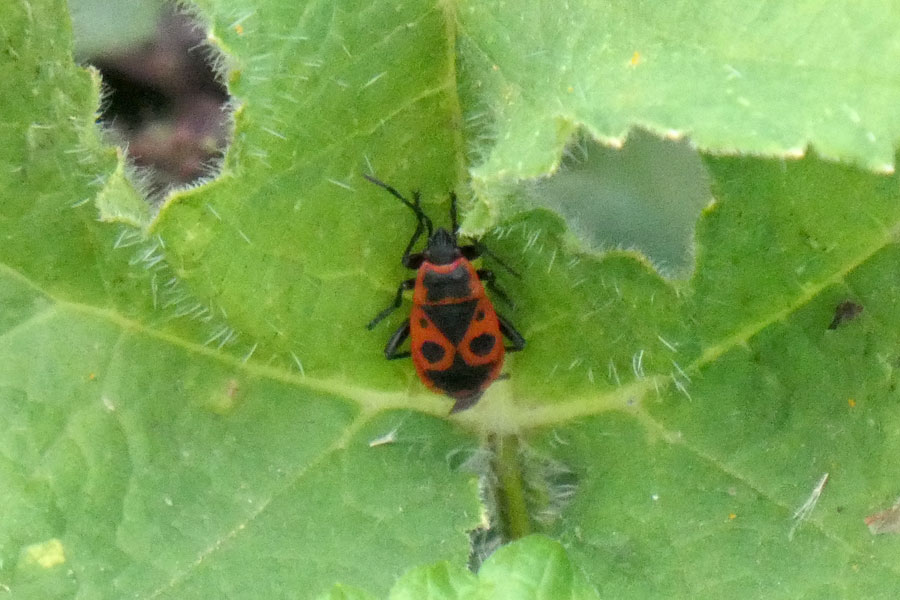 |
|
Enlarged section, 720 mm, 1 m |
Enlarged section, 360 mm, 1 m |
|
 |
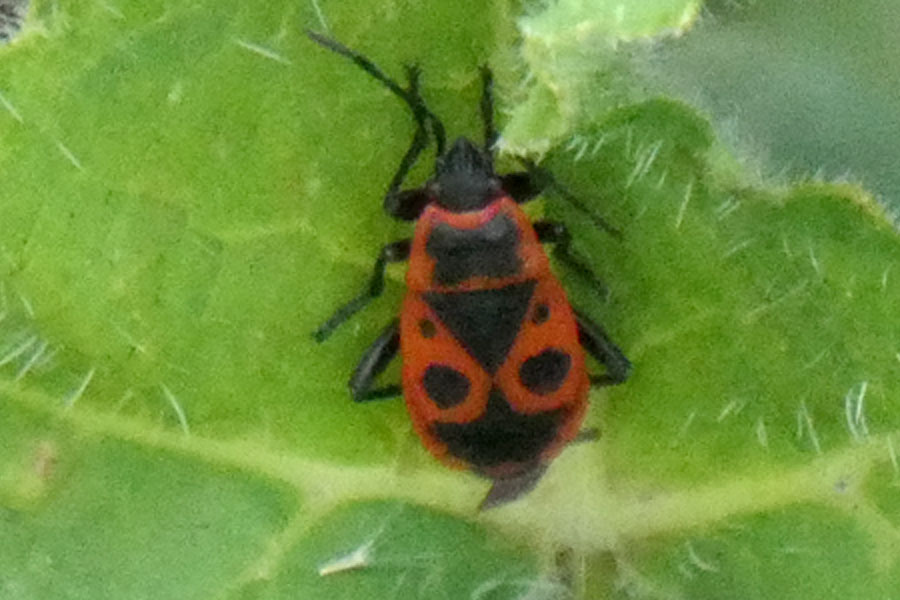 |
|
Enlarged section, 720 mm, 1 m, repeated for comparison purposes |
Enlarged section, 360 mm, 1 m, scaled to 200% |
This 360 mm sample, at least, looks a little bit fuzzier than the i.Zoom version, but it also has less artifacts and looks a little bit "cleaner". The i.Zoom seems to be somewhat "aggressive" at the expense of introducing artifacts.
Considering the fire bug, it is definitely not a good idea to shoot such a small bug from a distance of 1m... But sometimes this is the only option for taking a photo of of a bug and determining the species afterwards.
The following photos were taken with ISO 1600:
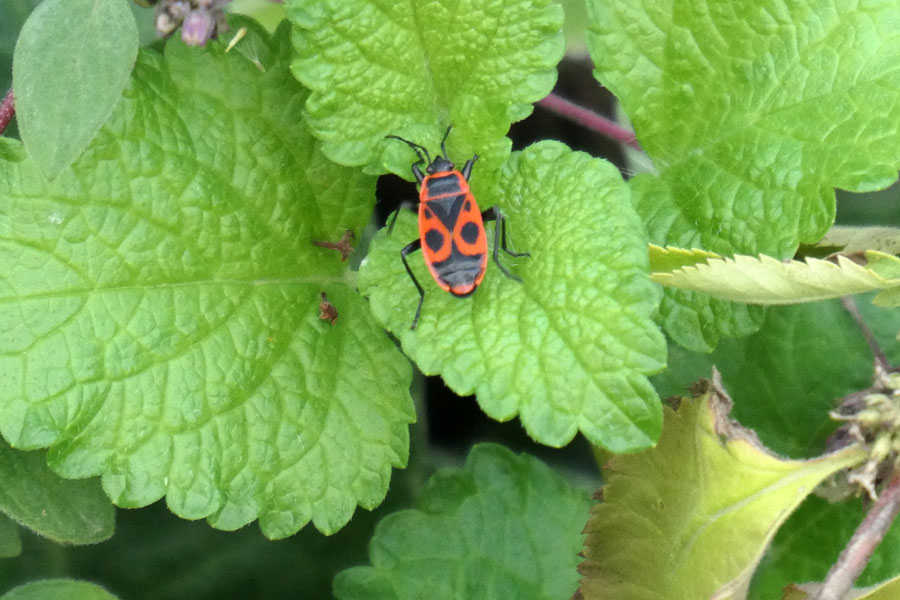 |
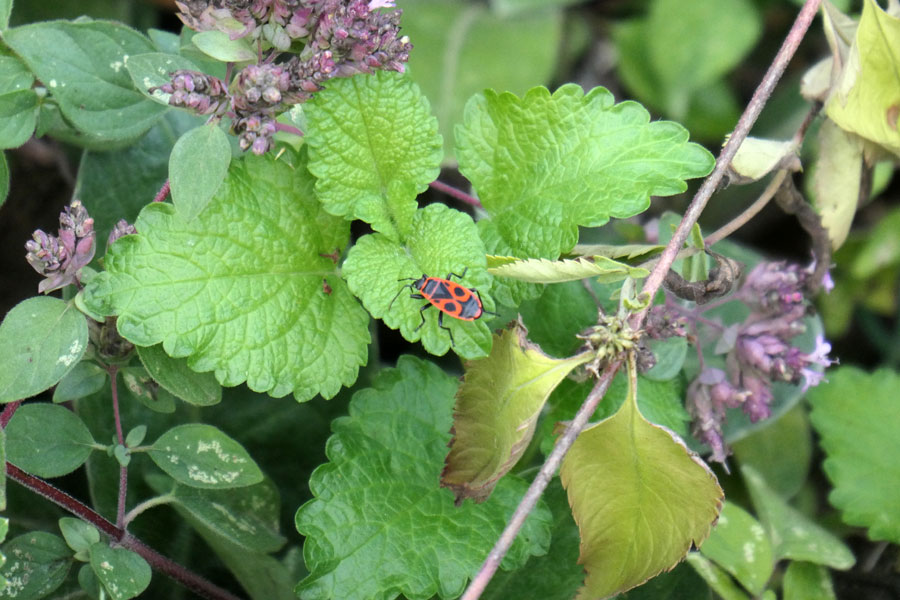 |
|
Original section, 720 mm, 1 m |
Original section, 360 mm, 1 m |
|
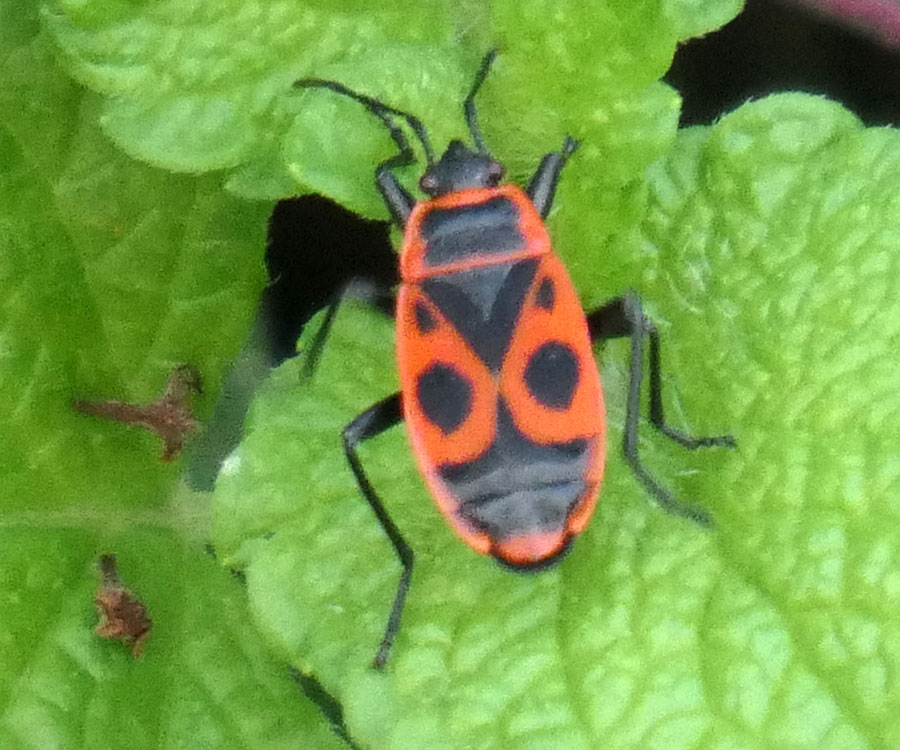 |
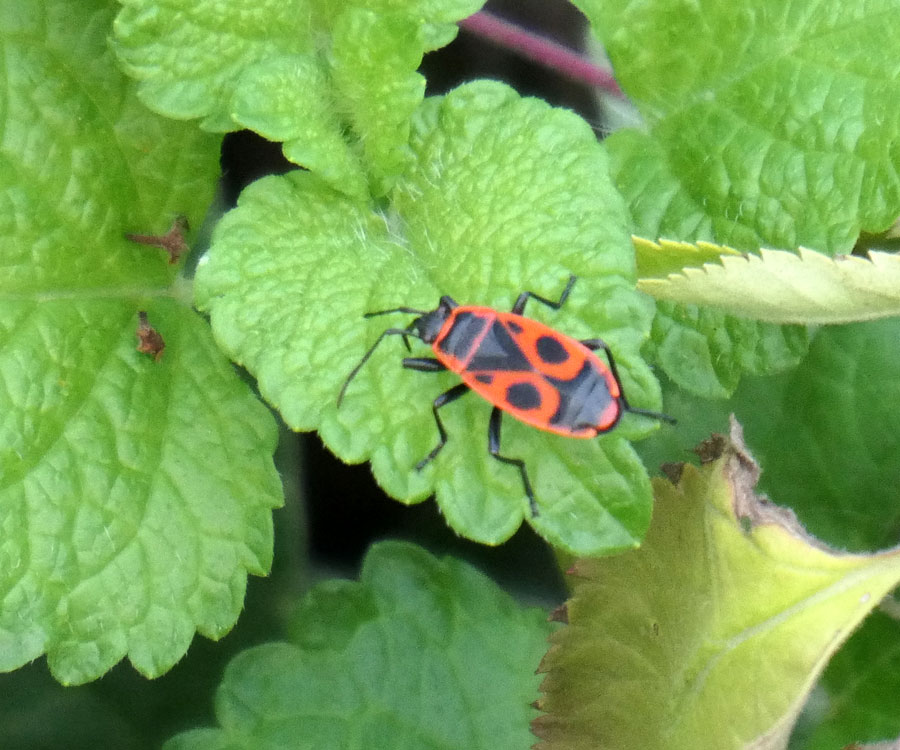 |
|
Enlarged section, 720 mm, 1 m |
Enlarged section, 360 mm, 1 m |
|
 |
 |
|
Enlarged section, 720 mm, 1 m, repeated for comparison purposes |
Enlarged section, 360 mm, 1 m, scaled to 200% |
It looks as if I will have to wait for better lighting conditions for more decisive results, but overall, the 360 mm images have less artifacts when scaled up to the same size.
Real World Sample Photos
The following real world photos are neither shot at exactly the minimum distance, nor are they exactly comparable...
 |
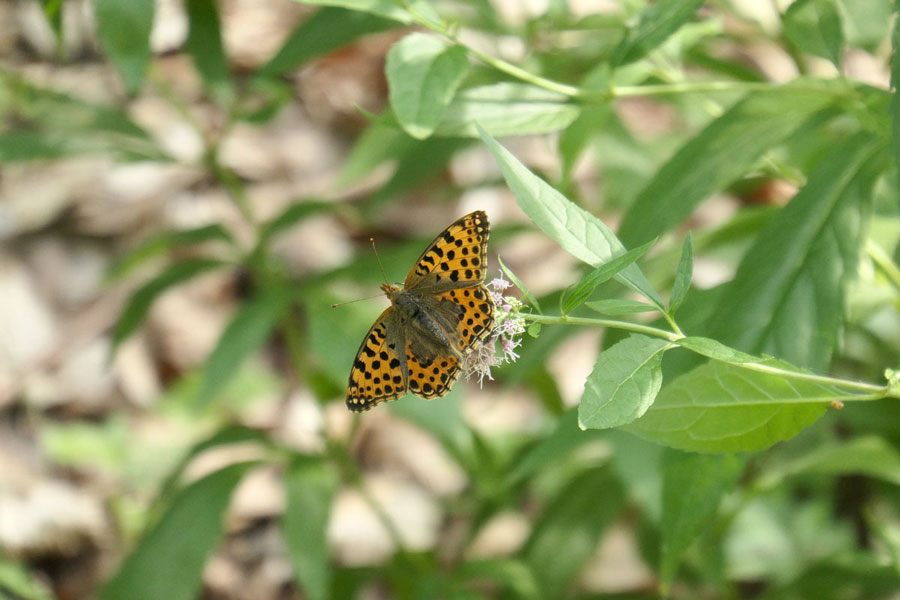 |
|
Original section, 720 mm, > 1 m |
Original section, 360 mm, > 1 m |
|
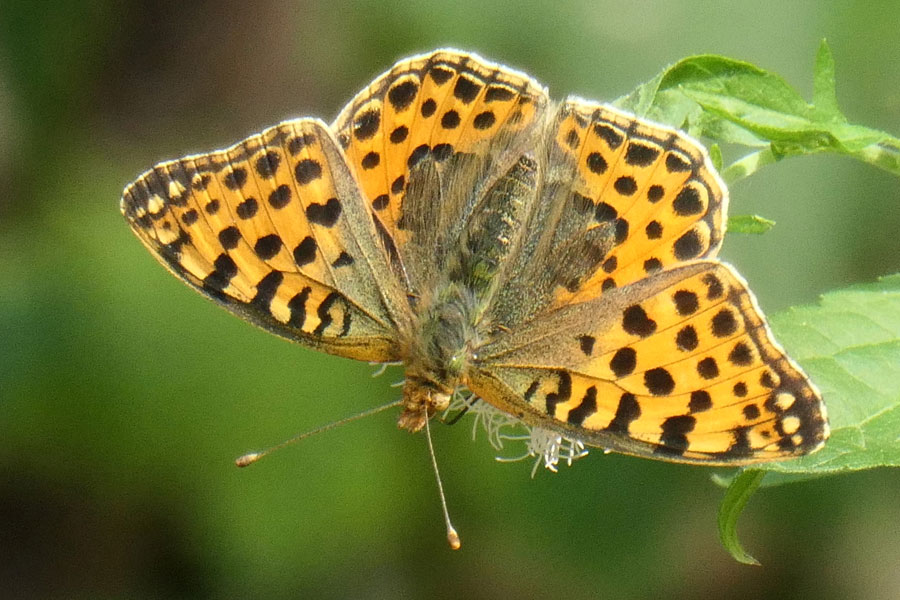 |
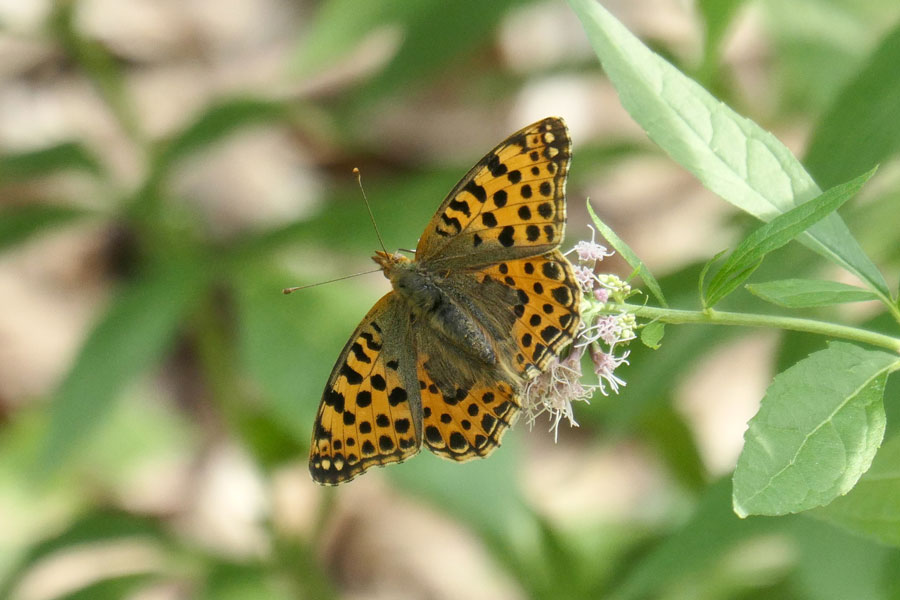 |
|
Enlarged section, 720 mm, > 1 m |
Enlarged section, 360 mm, > 1 m |
|
 |
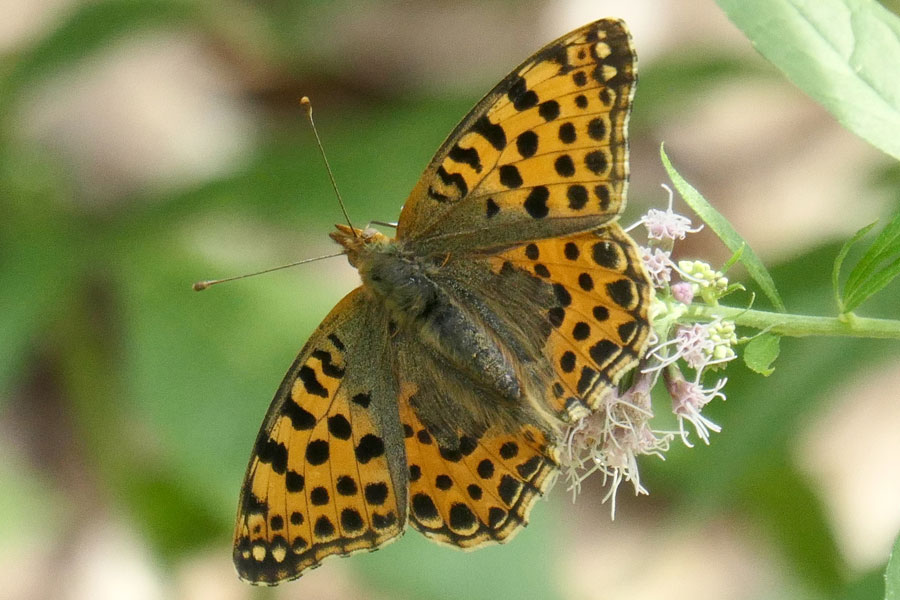 |
|
Enlarged section, 720 mm, > 1 m, repeated for comparison purposes |
Enlarged section, 360 mm, > 1 m, scaled to 200% |
| 10.02.2019 |

